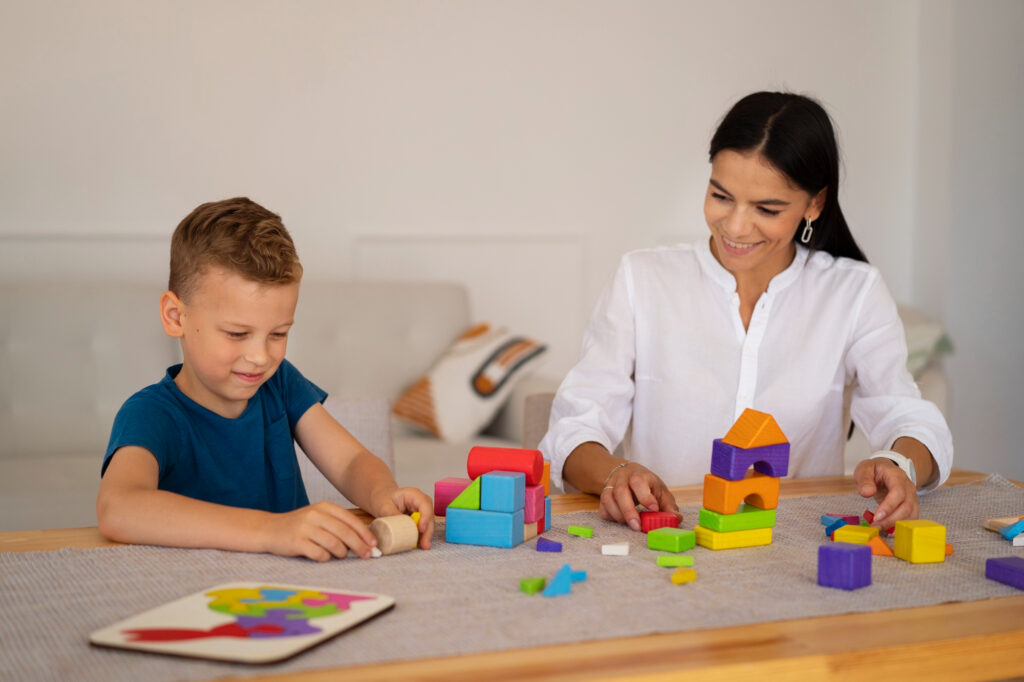Occupational Therapy for Toddler Behavior Issues: Does it work?
Imagine a world where every action, every task, every daily routine is imbued with a sense of purpose and ease. For those grappling with behavior problems, such a world might seem distant.
But what if the key to unlocking this world lies in the hands of occupational therapists? Let’s delve into how occupational therapy (OT) might just be the compass that guides individuals with behavioral challenges towards a more harmonious life.
TL;DR:
Occupational therapy (OT) helps address behavior problems by identifying underlying challenges and using tailored strategies to support daily functioning. OT benefits individuals with conditions like autism, ADHD, stroke, or dementia, and is especially impactful for children with developmental delays or sensory issues. Techniques include sensory integration, cognitive behavioral strategies, and skill-building to promote positive behavior and improve quality of life. OT is evidence-based and adaptable, offering personalized solutions that transform everyday experiences.
Reach out to your nearest occupational therapist for help today!

OT For Behavior Issues
Occupational therapists are like detectives of the mind and body. They look for clues in a person’s behavior that might tell us why certain tasks are tough, why some situations feel overwhelming, and they devise strategies to overcome these hurdles.
Occupational therapy isn’t just about jobs; it’s about the ‘occupations’ of life — the everyday activities that fill our days, from the moment we wake to the moment we rest. But how does this relate to behavior?
Learn more about how to start exercising after years of inactivity
The Impact of Occupational Therapy on Specific Behavior Issues
By addressing specific challenges, occupational therapy promotes growth and development in diverse situations. Here are several key areas where OT has a significant impact:
Navigating the Spectrum
For individuals on the autism spectrum, behavior can be a language in itself. Occupational therapy helps to translate this language, teaching coping mechanisms and social norms in a way that respects the individual’s unique perspective.
Beyond the Diagnosis
But it’s not just about specific conditions. Occupational therapy can help anyone with behavioral issues. Whether it’s a child struggling with ADHD, an adult dealing with the aftermath of a stroke, or an elderly person coping with the onset of dementia, OT has strategies to help.
What Does Occupational Therapy Do for Toddlers?
Pediatric occupational therapy is crucial for young children facing challenges in their daily lives. Occupational therapists enjoy seeing children overcome issues that affect their routines, such as:
- Being unable to sit at the table with the family due to having too much energy.
- Not tolerating certain types of clothing.
Through their work, therapists have deep conversations with children and their families to find personalized solutions. After several sessions, it is exciting for therapists to hear families report having successful family meals using the techniques learned in therapy.
How to Know If Your Child Needs Occupational Therapy
For parents wondering if their child needs occupational therapy, it is essential to observe if the child is reaching their motor milestones. Here are some examples to consider:
- Does your child sit at the table to color and cut?
- Can they help dress or fasten their clothes according to their age?
- Are there more tantrums or meltdowns when going to the store?
- Do they not tolerate certain foods or clothing?
- Do they have much more energy compared to other children?
Next Steps
If these concerns are present, it is crucial for parents to talk to their primary care doctor. The doctor can determine if therapy would be appropriate and refer the child to a local therapist for an evaluation and recommendations.
The Effectiveness of Occupational Therapy
Here are some key aspects that highlight the effectiveness of occupational therapy:
Evidence-Based Practice
Occupational therapy isn’t a shot in the dark. It’s a science, grounded in research, that looks at the evidence behind what works and what doesn’t when it comes to modifying behavior.
Real-life Success Stories
From children with autism to adults with anxiety, occupational therapy has a track record of transforming lives. Through tailored activities and exercises, OT can help individuals learn to regulate their behavior, manage stress, and respond more positively to their environment.
Learn more about doctor for muscle pain
A Multifaceted Approach: OT Techniques for Behavioral Improvement
By combining various techniques, OTs create tailored interventions that foster positive change and promote overall well-being. Here are some key strategies used in this comprehensive approach:
Sensory Integration
Sometimes, behavior is a response to a sensory-overloaded world. OTs use sensory integration techniques to help individuals process the world around them in a more balanced way.
Cognitive Behavioral Strategies
Occupational therapists also draw from cognitive behavioral therapy, helping individuals to change the thought patterns that lead to problematic behaviors.
Skill Development and Adaptation
It’s about equipping people with the skills they need to handle life’s challenges and adapting the environment to suit their needs. This might mean learning time management to reduce anxiety or modifying a workspace to reduce distractions.
The Transformative Power of Occupational Therapy
As we reach the end of our journey into the realm of occupational therapy and behavior, one thing is clear: OT has the potential to significantly improve the lives of those with behavioral challenges. It’s not just about changing behavior; it’s about changing lives, one activity at a time.ChatGPT said:
Key Takeaways:
- Purpose of OT: Supports daily activities by addressing behavioral, emotional, sensory, and physical challenges.
- Behavioral Role: Identifies causes of behaviors and builds strategies to improve responses.
- Who Benefits: Helpful for all ages, including those with autism, ADHD, stroke, dementia, and behavioral issues.
- Pediatrics: Assists children with hyperactivity, sensory sensitivities, routines, motor milestones, and family interactions.
- When to Seek OT: Signs include trouble dressing, sitting still, food/clothing sensitivities, tantrums, or excess energy.
- Referral: Parents consult a primary doctor for OT evaluation.
- Proven Effectiveness: Research-based methods improve daily function and behavior.
- Techniques: Sensory integration, cognitive-behavioral strategies, skill building, and environment adaptation.
- Outcomes: Better emotional regulation, reduced stress, stronger social skills, and improved well-being.
- Core Message: OT addresses behavior at its root, helping people thrive in daily life.
